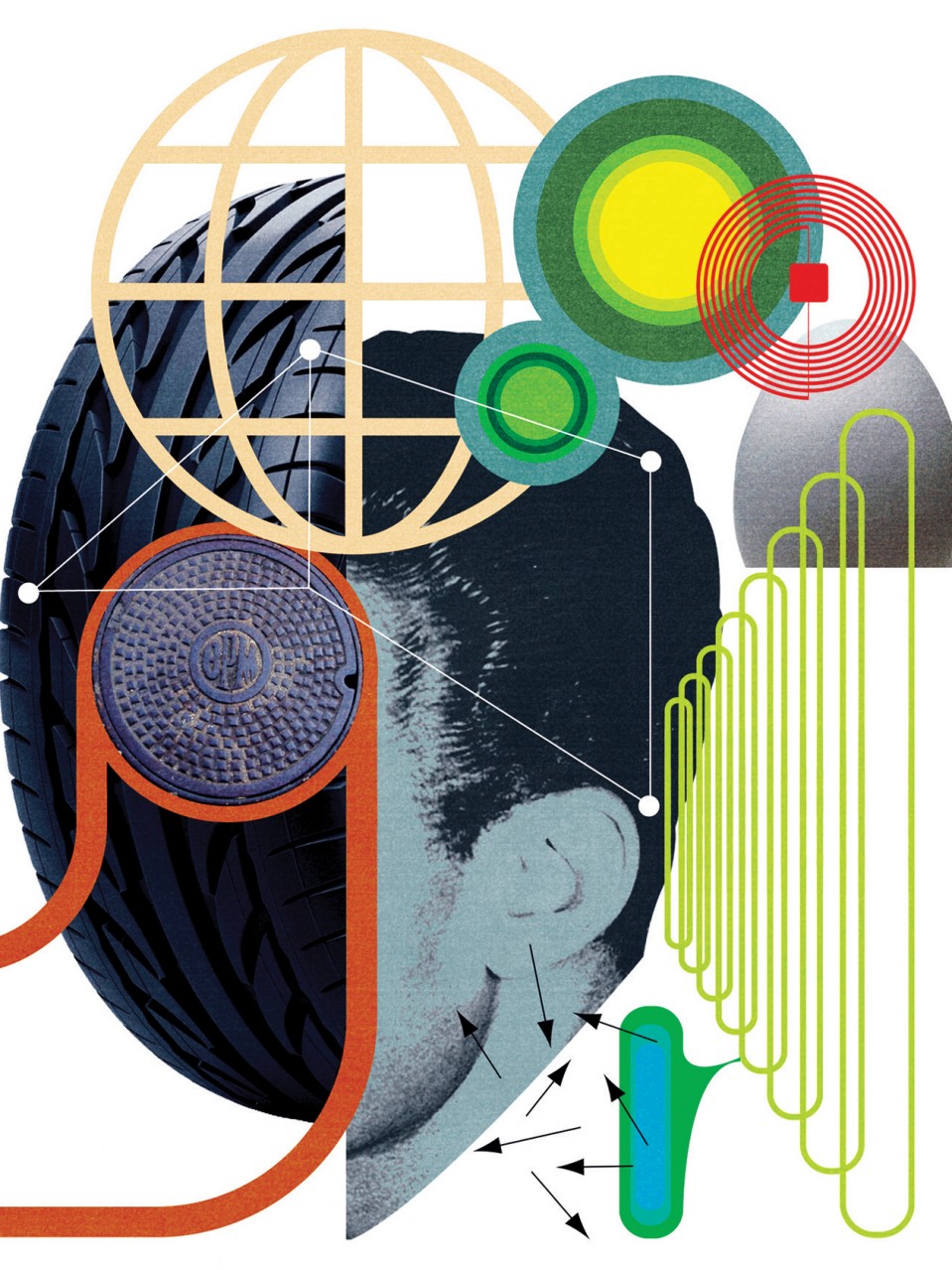Business Impact
Business Adapts to a New Style of Computer
Are companies ready for billions of everyday objects to join the Internet?



The technology industry is preparing for the Internet of things, a type of computing characterized by small, often dumb, usually unseen computers attached to objects. These devices sense and transmit data about the environment or offer new means of controlling it.
For more than a decade technologists have predicted and argued about the onslaught of these ubiquitous devices. “There is a lot of quibbling about what to call it, but there’s little doubt that we’re seeing the inklings of a new class of computer,” says David Blaauw, who leads a lab at the University of Michigan that makes functioning computers no bigger than a typed letter o.
A key feature is very cheap radios, etched right into silicon. There’s one in your smartphone. But now prices are falling to around $5. As they get cheaper, it’s becoming affordable to connect more things, like sewer pipes or trash cans. At the University of California, Berkeley, researchers are even designing computers the size of a pinhead to collect data inside the brain and transmit it through the skull. The idea is that human bodies will join the network, too (see “The Internet of You”).
It can all sound far-fetched and overhyped. Does anyone really need a smart coffee pot or a refrigerator with a Web browser? Plenty of the inventions do seem silly. On Amazon, product reviewers have had a field day with a $78 digital “egg minder” that reports to a smartphone which egg in a refrigerator is oldest. “Wonderful product!” sneered one. “So many gray hairs avoided by never having to worry about my eggs again.”
Yet for every killer app that wasn’t, there’s another computer-sensor combination that has quietly added to the capabilities of some machine. Since 2007, for instance, every new car in the United States has had a chip in each tire that measures pressure and sends data by radio to the car’s central computer. It’s starting to add up. The average new car has 60 microprocessors in it, according to the Center for Automotive Research. Electronics account for 40 percent of the cost of making a car.
The Internet of things is especially important for companies that sell network equipment, like Cisco Systems. Cisco has been enthusiastically predicting that 50 billion “things” could be connected to communications networks within six years, up from around 10 billion mobile phones and PCs today (see “Silicon Valley to Get a Cellular Network, Just for Things”). Another beneficiary is the $300 billion semiconductor industry. As Blaauw notes, “Every time there has been a new class of computing, the total revenue for that class was larger than the previous ones. If that trend holds, it means the Internet of things will be bigger yet again.”
But every shift promises pain, too. Large companies like Intel are already reeling from the rapid emergence of smartphones. Intel, with its powerful, power-hungry chips, was shut out of phones. So was Microsoft. Now both these companies, and many others, are groping to find the winning combination of software, interfaces, and processors for whatever comes next.
And it’s not just technology companies that must stay alert this time around. The reason, explains Marshall Van Alstyne, a professor at Boston University, is that as ordinary products become connected, their manufacturers may enter information businesses whose economics are alien to them. It’s one thing to manufacture shoes, but what about a shoe that communicates? Products could turn out to be valuable mainly as the basis for new services. “You might find the data is more valuable than the shoe,” says Van Alstyne (see “The Economics of the Internet of Things” and “The Light Bulb Gets a Digital Makeover”).
In this MIT Technology Review business report we decided to explore the big question of what new businesses will arise as things get connected. One company making the point is Nest Labs, maker of a slick-looking smart thermostat that’s coupled to the Internet. Nest, which was acquired by Google this year, has been clobbering rival thermostat makers. But now that it has a network of thermostats and can control them from afar, it’s starting to offer services to electric utilities. On hot days it can selectively turn down air conditioners, controlling demand (see “The Lowly Thermostat, Now Minter of Megawatts”).
Nest’s tests with utilities are still small. But one day, with a few bits sent across a network, the company might put a power plant or two out of business. No wonder this year, in his annual letter to shareholders, Jeff Immelt, CEO of General Electric, the world’s largest manufacturer, told his investors that “every industrial company will be a software company” (see “GE’s $1 Billion Software Bet”).
Gordon Bell, a Microsoft researcher and a pioneer of the original computer revolution, believes no one knows exactly what form computing will take on the Internet of things. But he says that’s unsurprising. The importance of the PC and the smartphone became clear only after their development. “The ‘Internet of things’ is a way of saying that more of the world will become part of the network,” he says. “That is what is going on. We are assimilating the world into the computer. It’s just more and more computers.”